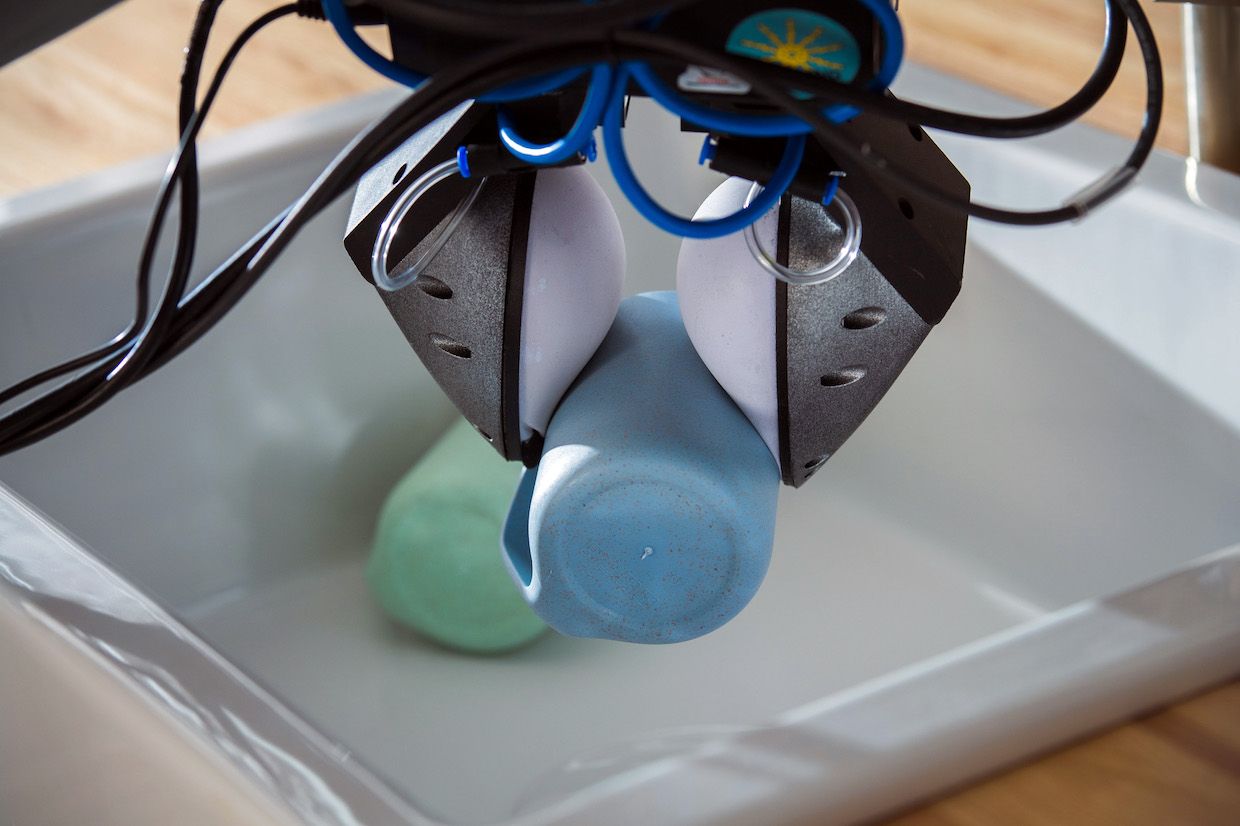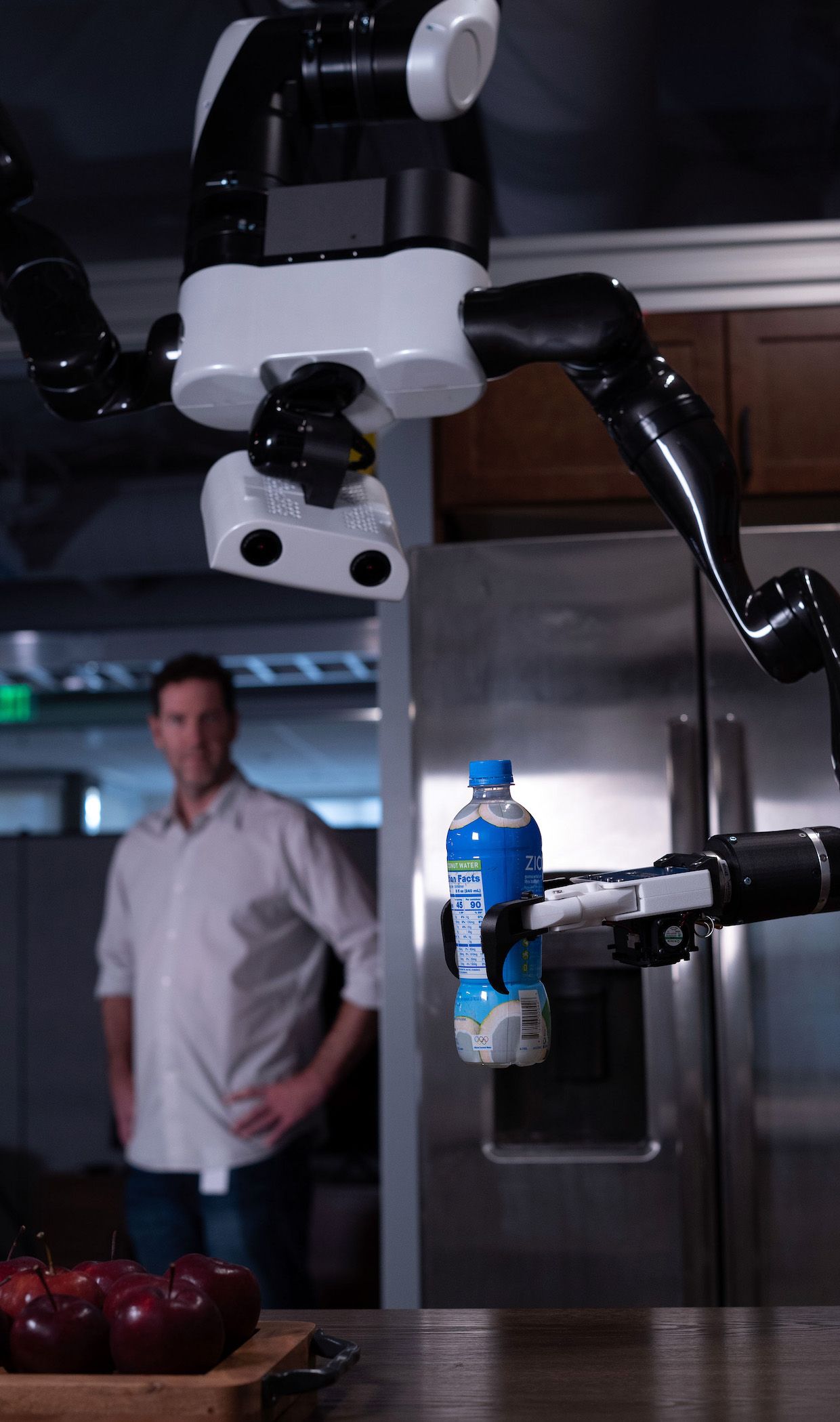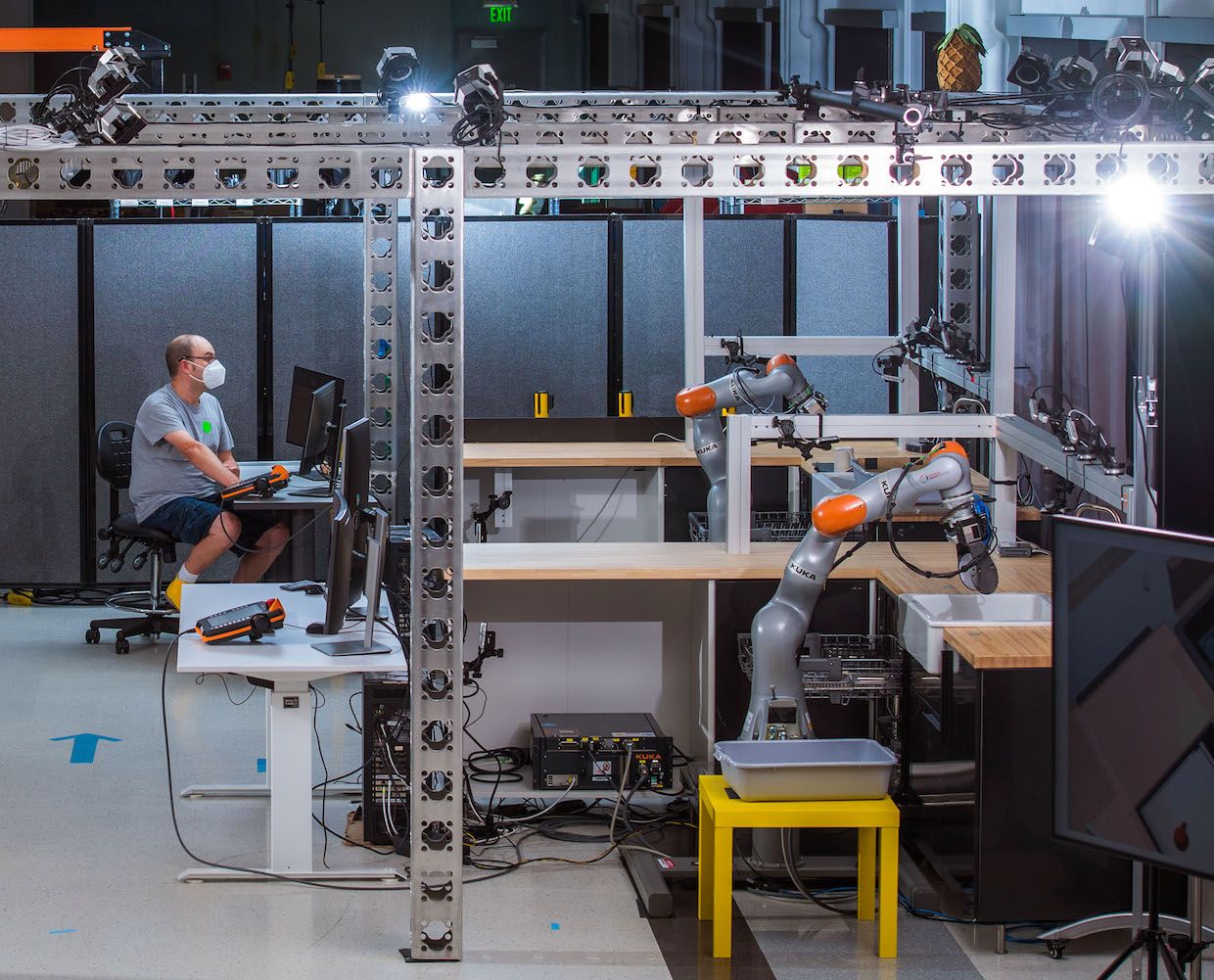Toyota Research Demonstrates Ceiling-Mounted Home Robot
Over the last several years, Toyota has been putting more muscle into forward-looking robotics research than just about anyone. In addition to the Toyota Research Institute (TRI), there's that massive 175-acre robot-powered city of the future that Toyota still plans to build next to Mount Fuji. Even Toyota itself acknowledges that it might be crazy, but that's just how they roll-as TRI CEO Gill Pratt told me a while back, when Toyota decides to do something, they really do go all-in on it.
TRI has been focusing heavily on home robots, which is reflective of the long-term nature of what TRI is trying to do, because home robots are both the place where we'll need robots the most at the same time as they're the place where it's going to be hardest to deploy them. The unpredictable nature of homes, and the fact that homes tend to have squishy fragile people in them, are robot-unfriendly characteristics, but as the population continues to age (an increasingly acute problem in Japan), homes offer an enormous amount of potential for helping us maintain our independence.
Today, Toyota is showing off some of the research that it's been working on recently, in the form of a virtual reality presentation in lieu of an in-person press event. For journalists, TRI pre-loaded the recording onto a VR headset, which was FedEx'ed to my house. You can watch the entire 40-minute presentation in 360 video on YouTube (or in VR if you have a headset of your own), but if you don't watch the whole thing, you should at least check out the full-on GLaDOS (with arms) that TRI thinks belongs in your home.
The presentation features an introduction from Gill Pratt, who looks entirely too comfortable embedded inside of one of TRI's telepresence robots. The event also covers a lot of territory, but the highlight is almost certainly the new hardware that TRI demonstrates.
Soft bubble gripper Photo: TRI
Photo: TRI This is a soft bubble gripper," under development at TRI's Cambridge, Mass., branch. These passively-compliant, air-filled grippers make it easier to grasp many different kinds of objects safely, but the nifty thing is that they've got cameras inside of them watching a pattern of dots on the interior of the soft membrane.
When the outside of the bubble makes contact with an object, the bubble deforms, and the deformation of the dot pattern on the inside can be tracked by the camera to determine both directions and magnitudes of forces. This is a concept that we've seen elsewhere before, but TRI's implementation is a clever way of making an inherently safe end effector that can still perform all the sensing you need it to do for relatively complex manipulation tasks.
The bubble gripper was presented at ICRA this year, and you can read the technical paper here.
Ceiling-mounted home robot Photo: TRI
Photo: TRI I don't know whether robots dangling from the ceiling was somehow sinister pre-Portal, but it sure as heck is for me having played through that game a couple of times, and it's since been reinforced by AUTO from WALL-E.
The reason that we generally see robots mounted on the floor or on tables or on mobile bases is that we're bipeds, not bats, and giving a robot access to a human-like workspace is easiest to do if you also give that robot a human-like position and orientation. And if you want to be able to reach stuff high up, you do what TRI did with their previous generation of kitchen manipulator, and just give it the ability to make itself super tall. But TRI is convinced it's a good place to put our future home robots:
One innovative concept is a gantry robot" that would descend from an overhead framework to perform tasks such as loading the dishwasher, wiping surfaces, and clearing clutter. By traveling on the ceiling, the robot avoids the problems of navigating household floor clutter and navigating cramped spaces. When not in use, the robot would tuck itself up out of the way. To further investigate this idea, the team has built a laboratory prototype robot that can do all the same tasks as a floor-based mobile robot but with the innovative overhead mobility system.
Another obvious problem with the gantry robot is that you have to install all kinds of stuff in your ceiling for this to work, which makes it very impractical (if not totally impossible) to introduce a system like this into a home that wasn't built specifically for it. If, however, you do build a home with a robot like this in mind, the animation below from TRI shows how it could be extra useful. Suddenly, stairs are a non-issue. Payload is presumably also a non-issue, since loads can be transferred to the ceiling. Batteries become unnecessary, so the whole robot can be much lighter weight, which in turn makes it safer. Sensors get a fantastic view, and obstacle avoidance becomes trivial.
Robots as time machines" Photo: TRI
Photo: TRI TRI's presentation covered more than what we've highlighted here-our focus has been on the hardware prototypes, but TRI had more to talk about, including learning through demonstration, scaling learning through simulation, and how TRI has been working with users to figure out what research directions should be explored. It's all available right now on YouTube, and it's well worth 40 minutes of your time.
What we're really focused on is this principle idea of amplifying, rather than replacing, human beings" -Gill Pratt, TRIIt's only been five years since Toyota announced the $1 billion investment that established TRI, and it feels like the progress that's been made since then has been substantial. It's not often that vision, resources, and long-term commitment come together like this, and TRI's emphasis on making life better for people is one of the things that helps to keep us optimistic about the future of robotics.
What we're really focused on is this principle idea of amplifying, rather than replacing, human beings," Gill Pratt told us. And what it means to amplify a person, particularly as they're aging-what we're really trying to do is build a time machine. This may sound fanciful, and of course we can't build a real time machine, but maybe we can build robotic assistants to make our lives as we age seem as if we are actually using a time machine." He explains that it doesn't mean building robots for convenience or to do our jobs for us. It means building technology that enables us to continue to live and to work and to relate to each other as if we were younger," he says. And that's really what our main goal is."